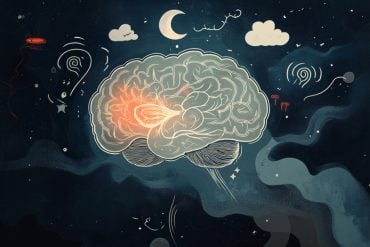Summary: Findings of a new study could help to design better strategies to improve sleep in workers with atypical work schedules.
Source: McGill University
Getting enough sleep can be a real challenge for shift workers affecting their overall health. But what role does being an early bird or night owl play in getting good rest? Researchers from McGill University find a link between chronotype and amount of sleep shift workers can get with their irregular schedules.
“Some people seem to be hardwired to sleep early, while others tend to sleep late. This preference, called chronotype, is modulated by our circadian system – each person’s unique internal timekeeper,” says lead author Diane B. Boivin, a Professor in the Department of Psychiatry at McGill University.
Their study published in Sleep is the first to examine the relationship between chronotype and sleep behaviour in shift workers during morning, evening, and night shifts. To investigate this relationship, the researchers tracked 74 police officers as they worked their usual shifts. For close to a month, the officers wore a watch-like device, allowing researchers to measure their sleep.
Not all shifts created equal
“Our results suggest that the effect of chronotype on sleep duration and napping behavior depends on the shift type. On average early risers sleep 1.1 hours longer on morning shifts, while night owls sleep two hours longer on evening shifts,” says co-author Laura Kervezee, a former Postdoctoral Fellow at The Douglas Research Centre affiliated with McGill University.
The power of naps
While shift workers take naps to reduce the effect of their irregular schedules on their sleep, the researchers found this behaviour was more prominent during night shifts in early risers. Generally, early risers slept less after night shifts compared to night owls – but they also took more naps prior to their night shifts, so their total daily sleep was similar.

The findings could help design strategies to improve sleep in workers with atypical schedules, the researchers say. Such strategies could include work schedules that consider chronobiological principles.
“People involved in shift work experience an increased risk of sleep disturbances and fragmented sleep periods. Since sleep is essential for optimal performance, health, and well-being, it’s important to develop strategies to get better rest,” says Boivin, who is also the Director of the Centre for Study and Treatment of Circadian Rhythms at The Douglas Research Centre.
As next steps, the researchers hope to study the impact of chronotype and shift work on other health outcomes.
About this sleep and genetics research news
Source: McGill University
Contact: Shirley Cardenas – McGill University
Image: The image is in the public domain
Original Research: Closed access.
“The relationship between chronotype and sleep behavior during rotating shift work: a field study” by Diane B. Boivin et al. Sleep
Abstract
The relationship between chronotype and sleep behavior during rotating shift work: a field study
Shift work, an essential part of our 24/7 society, inevitably leads to displacement of the habitual sleep period and thereby to misalignment of the internal circadian timing system with the rest–activity cycle and the environment. How interindividual differences in circadian organization affect sleep duration and timing during rotating shift work is not fully understood.
The objective of this study was to assess the effect of chronotype, shift type, and their interaction on actigraphy-based sleep behavior in 74 police officers (20 women and 54 men; age [mean ± SD]: 32.1 ± 5.4 years) involved in rotating shift work throughout a 28- to 35-day work cycle consisting of morning, evening, and night shifts.
Using linear mixed modeling, we found that chronotype was associated with sleep duration depending on the shift type: increasing morningness was correlated with longer sleep duration during series of consecutive morning shifts, while increasing eveningness was correlated with longer sleep duration during series of evening shifts.
During series of night shifts, increasing eveningness was associated with a longer duration of the main sleep episode, but this relationship was attenuated and no longer significant when naps were taken into account due to increased napping in morning chronotypes during series of night shifts.
Providing a detailed within-subject characterization of sleep behavior across a complete work cycle consisting of morning, evening, and night shifts, this study advances the understanding of the relationship between chronotype and sleep in rotating shift workers and supports the implementation of work schedules that take into account chronobiological principles.






